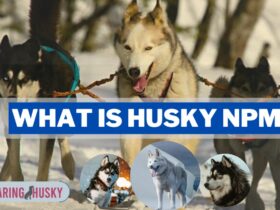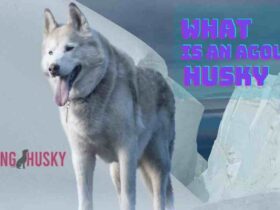Huskies, with their striking appearance and captivating blue eyes, are undeniably one of the most alluring dog breeds. These intelligent and energetic canines have won the hearts of dog enthusiasts around the world. However, owning a Husky comes with great responsibility. The allure of their wolf-like appearance often overshadows the challenges of caring for them. In this comprehensive guide, we will delve into the world of Huskies and explore the crucial question: What should you NOT do with a Husky? Responsible ownership is paramount, as neglecting their specific needs can lead to behavioral issues and health concerns. Join us on this journey to ensure a happy and harmonious life with your Husky companion.
What Should You Not Do With A Husky?
To ensure a happy and healthy life with your Husky, avoid neglecting their exercise and mental stimulation needs. Huskies require daily physical activity and mental challenges to prevent boredom and destructive behavior. Additionally, don’t overlook grooming, as their thick coat requires regular care. Socialization and proper training are essential, and never resort to punishment-based methods. Lastly, provide regular veterinary care and be aware of common health concerns. Responsible ownership is key to a thriving relationship with your Husky.
Mistakes To Avoid When Caring For A Husky
Neglecting Exercise Needs: Huskies require daily exercise to stay happy and healthy. Failing to provide adequate physical activity can lead to behavior problems.
- Ignoring Mental Stimulation: These intelligent dogs need mental challenges like puzzle toys and training to prevent boredom and destructive behavior.
- Inadequate Grooming: Huskies have a thick coat that requires regular brushing and bathing to avoid matting and excessive shedding.
- Lack Of Socialization: Early socialization is crucial to prevent aggression and fearfulness in Huskies. Introduce them to various people and situations.
- Leaving Them Alone For Long Periods: Huskies may suffer from separation anxiety if left alone for extended periods. Plan for companionship or dog-sitting.
- Overlooking Dietary Needs: Provide a balanced diet with proper portions to maintain their health and energy.
Responsible Care Ensures A Happy And Well-Adjusted Husky
Understanding The Husky Breed:
Huskies are a captivating breed known for their striking appearance, intelligence, and spirited personalities. To be a responsible Husky owner, it’s essential to understand the unique characteristics and history of this breed.
Physical Traits:
Huskies are medium-sized dogs with a distinctive appearance. They have a thick double coat that comes in various colors, often with striking facial masks and blue or multicolored eyes. Their erect triangular ears and curled tails add to their charm. These physical traits are adaptations to their cold Arctic origins, providing insulation and protection.
Temperament:
Huskies are renowned for their friendly and outgoing nature. They are social dogs that often get along well with people and other dogs. However, they retain a strong prey drive, making them less reliable around smaller pets like cats and rabbits. They are also known for their vocal nature, often howling or “talking” to communicate their feelings.
Husky History And Background:
Huskies originated with the Chukchi people of Siberia, where they were bred as sled dogs for transportation and hunting. These dogs played a crucial role in surviving the harsh Arctic conditions and became known for their endurance and resilience. In the early 20th century, Huskies were brought to Alaska for sled dog racing, further solidifying their reputation as exceptional working dogs.
Common Misconceptions:
Despite their popularity, there are common misconceptions about Huskies. One is that they require extremely cold weather to thrive, which isn’t entirely accurate. While they have a thick coat, Huskies can adapt to various climates. Another misconception is that they are easy to train. While intelligent, they have an independent streak and may require patient, consistent training methods. Understanding the Husky breed’s physical traits, temperament, history, and dispelling misconceptions is the foundation for responsible ownership and a harmonious relationship with these captivating dogs.
Training And Discipline For Huskies
Training and disciplining Huskies require patience, consistency, and positive reinforcement. Here’s how to ensure effective training while maintaining a loving relationship with your Husky:
- Positive Reinforcement: Use rewards like treats, praise, and play to reinforce good behavior. Huskies respond well to positive reinforcement and will be eager to please.
- Consistent Training Routine: Establish a consistent daily training routine. Short, frequent sessions work better than long, sporadic ones.
- Clicker Training: Consider clicker training, a method using a clicking sound to signal correct behavior. Huskies often respond positively to this clear and immediate feedback.
- Avoid Punishment-Based Methods: Avoid harsh punishments or physical corrections, as they can lead to fear and aggression. Huskies thrive on positive interactions and may rebel against harsh treatment.
- Basic Commands: Teach basic commands like sit, stay, come, and leash walking. Start with one command at a time and gradually build on them.
- Socialization: Socialize your Husky from a young age to different people, animals, and environments. This helps prevent fearfulness and aggression.
- Handling Behavioral Issues: Address common Husky behavioral issues like pulling on the leash, howling, destructive chewing, and escaping. Seek professional help if needed, especially for severe behavioral problems.
- Patience And Consistency: Be patient and consistent in your training efforts. Huskies can be independent, so persistence is key to success.
- Exercise And Mental Stimulation: Ensure your Husky receives plenty of exercise and mental stimulation. A tired Husky is more likely to focus and respond to training.
- Ongoing Training: Training is an ongoing process throughout your Husky’s life.
Continue to reinforce commands and behaviors to maintain good conduct. By using positive reinforcement, consistency, and understanding your Husky’s unique personality, you can build a strong bond while effectively training and disciplining your furry companion.
Health And Veterinary Care For Your Husky
- Regular Vet Checkups: Schedule regular checkups with a veterinarian to monitor your Husky’s overall health. Annual examinations can catch potential issues early.
- Common Husky Health Concerns: Be aware of breed-specific health issues such as hip dysplasia, eye problems (like cataracts), and skin conditions. Regular veterinary visits can help manage these.
- Vaccinations And Preventative Care: Keep your Husky up-to-date on vaccinations to protect against common diseases. Discuss preventative measures for fleas, ticks, and heartworm with your vet.
- The Importance Of Neutering/Spaying: Consider spaying/neutering your Husky to prevent unwanted pregnancies and reduce the risk of certain health problems. Regular veterinary care is essential to ensure your Husky’s well-being and address any health issues promptly.
How To Responsible Ownership In Different Environments?
- Exercise: Provide daily exercise through walks and visits to dog parks.
- Socialization: Expose your Husky to urban noises and different people.
- Leash Control: Keep them on a leash to prevent them from roaming.
- Secure Fencing: Ensure your property has a secure fence to prevent escape.
- Exploration: Allow controlled exploration of your rural surroundings.
- Interaction With Wildlife: Supervise interactions with wildlife to avoid conflicts.
- Warm Shelter: Provide insulated shelter and bedding.
- Cold-Weather Gear: Use doggy jackets and boots in extreme cold.
- Limit Exposure: Limit outdoor time in frigid temperatures.
- Safety: Use a secure crate or harness while traveling by car.
Tips For Bringing Home A Rescue Husky
Research Rescue Organizations: Find reputable rescue organizations that specialize in Huskies. Check their reviews and credentials.
- Meet The Husky: Spend time with the dog before adopting to assess compatibility and behavior.
- Home Preparation: Puppy-proof your home, removing hazards and providing a safe environment.
- Transition Slowly: Gradually introduce the Husky to their new home, allowing them to explore at their own pace.
- Establish Routine: Create a consistent daily routine for feeding, exercise, and bathroom breaks.
- Socialization: Expose your Husky to different people, animals, and environments to build confidence.
- Patience And Training: Be patient with any behavioral issues and consider professional training if needed.
- Veterinary Care: Schedule a vet checkup and ensure vaccinations and preventive care are up-to-date.
- Nutrition: Feed a balanced diet suitable for Huskies’ needs, consulting your vet if necessary.
- Love And Affection: Provide love, attention, and companionship to help your rescue Husky feel secure. Bringing home a rescue Husky can be a rewarding experience, but it requires patience and commitment to ensure a successful transition and a happy life for your new furry family member.
Conclusion
In conclusion, responsible Husky ownership is a journey filled with dedication and love. By avoiding common mistakes, prioritizing health and well-being, and adapting to different environments, you can provide your Husky with a fulfilling life. Whether you’re a new owner or have been with your Husky for years, remember that the bond you share is built on care and understanding. Commit to being the best Husky parent you can be, and in return, you’ll enjoy the companionship of a loyal and vibrant four-legged friend for many years to come.
FAQ’s
Are Huskies Good For First-Time Dog Owners?
Huskies can be challenging for first-time owners due to their energy and independence. Experienced dog owners may find it easier to meet their needs.
Do Huskies Require A Lot Of Exercise?
Yes, Huskies are an active breed and require daily exercise, including walks, runs, and playtime.
Are Huskies Good With Children And Other Pets?
Huskies can be good with children and other dogs when properly socialized from a young age. However, they may have a prey drive towards smaller pets.
How Do I Deal With Husky Shedding?
Regular grooming, including brushing their double coat, helps manage shedding. Huskies shed heavily twice a year, known as “blowing their coat.”
Do Huskies Tolerate Hot Weather?
Huskies are better suited for colder climates. In hot weather, provide shade, water, and limit outdoor activities during the hottest parts of the day to prevent overheating.







Leave a Reply